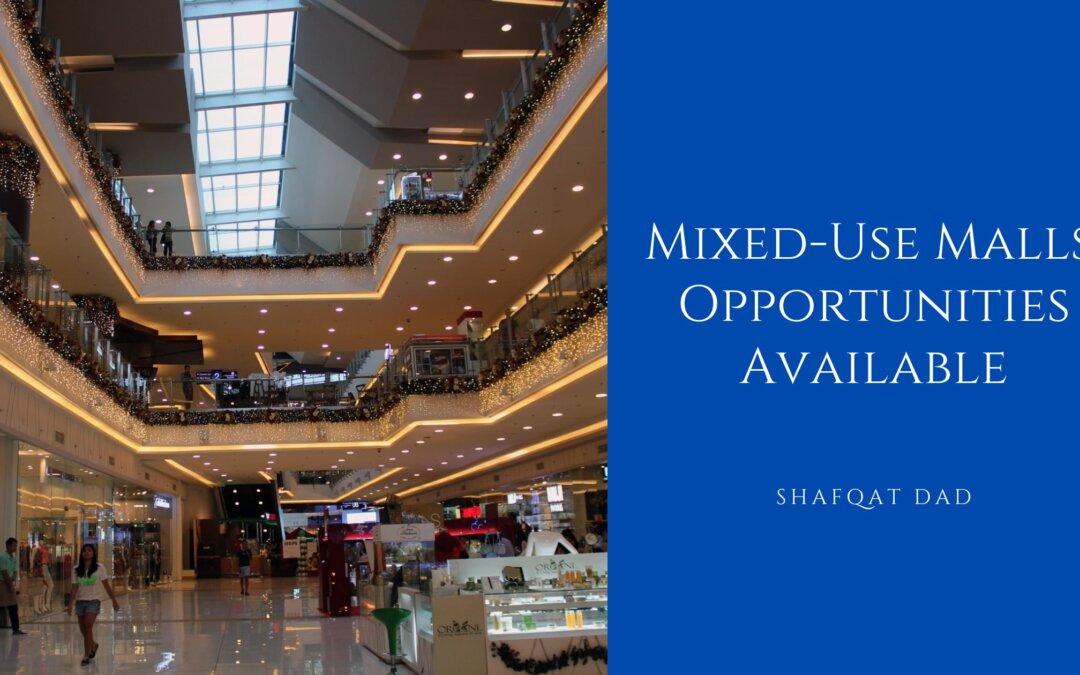Mixed-use malls, lifestyle centers, or urban villages are redefining the traditional shopping mall model by integrating retail, dining, entertainment, residential, and office spaces into cohesive, vibrant environments. These dynamic developments offer many opportunities for investors, developers, retailers, and consumers alike. Here are some key opportunities available within mixed-use malls:
1. Diverse Revenue Streams
One of the primary benefits of mixed-use malls is the ability to generate revenue from multiple sources. In addition to retail sales, mixed-use malls can generate income from leasing office space, residential units, and restaurant spaces. This diversified revenue stream helps mitigate risk and stabilize cash flow, particularly during economic downturns or shifts in consumer behavior.
2. Enhanced Customer Experience
Mixed-use malls offer diverse amenities and experiences that appeal to modern consumers seeking convenience, entertainment, and social interaction. From upscale shopping boutiques and gourmet restaurants to art galleries, cinemas, and fitness centers, these developments provide a comprehensive lifestyle destination where visitors can shop, dine, relax, and socialize in one convenient location. By prioritizing the customer experience, mixed-use malls can attract and retain a loyal customer base.
3. Urban Revitalization
Mixed-use malls can potentially revitalize urban areas and breathe new life into underutilized or blighted neighborhoods. These projects can stimulate economic growth, create jobs, and attract investment to surrounding communities by transforming vacant lots or obsolete shopping centers into vibrant mixed-use developments. Additionally, mixed-use malls often incorporate green spaces, public art installations, and pedestrian-friendly design features that enhance the overall aesthetic and appeal of the neighborhood.
4. Flexible Design and Adaptability
Mixed-use malls are highly adaptable and can be tailored to meet their target demographic’s specific needs and preferences. Developers can design and configure retail, residential, and commercial spaces to maximize efficiency and functionality. Whether it’s converting retail space into office suites or repurposing unused areas for pop-up shops or community events, mixed-use malls can evolve and adapt to changing market conditions and consumer trends.
5. Sustainable Development
Many mixed-use malls prioritize sustainability and environmental stewardship in their design and construction. From energy-efficient building materials and green building certifications to eco-friendly transportation options and water conservation measures, these developments strive to minimize their environmental footprint and promote sustainable living practices. By incorporating green technologies and initiatives, mixed-use malls can attract environmentally conscious consumers and enhance their reputation as responsible corporate citizens.
Mixed-use malls offer many opportunities for investors, developers, retailers, and consumers alike. Mixed-use malls can thrive in today’s competitive retail landscape by leveraging diverse revenue streams, enhancing the customer experience, revitalizing urban areas, embracing flexible design principles, and prioritizing sustainability. As the demand for integrated shopping, dining, entertainment, and living experiences continues to grow, mixed-use malls are poised to play a prominent role in shaping the future of retail and urban development.

